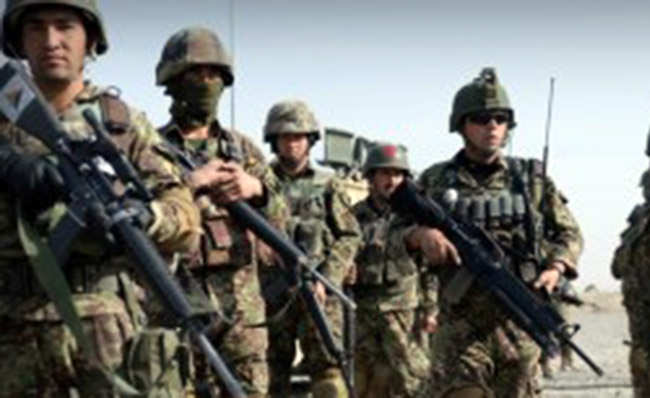The Taliban regime ruled Afghanistan about five years. Throughout this period, the international aid community, including the United Nations, tried with varying levels of success to ensure that the victims of the war and turmoil - ordinary Afghans trying to live their lives - received at least the minimum needed for survival. Political and security problems, in the absence of an effective government, caused frequent interruptions in the flow of humanitarian assistance, and various crises required the temporary departure of UN and non-governmental aid workers.
In the escalation of the conflict in Afghanistan following the 11 September terrorist attacks on the United States by Al Qaeda group, the Security Council expressed support for the efforts of the Afghan people to replace the Taliban regime, once again condemned for allowing Afghanistan to be used as a base for the export of terrorism.
In his address to a special week-long session of the General Assembly on terrorism, Secretary-General Kofi Annan said, “As we summon the will and the resources needed to succeed in the struggle against terrorism, we must also care for all the victims of terrorism, whether they are the direct targets or other populations who will be affected by our common effort. That is why I have launched an alert to donors about the potential need for much more generous humanitarian assistance to the people of Afghanistan.”
That new alert called on the international community to provide $584 million to meet the humanitarian needs of some 7.5 million Afghan civilians over the following six months, with particular concern to ensure adequate food supplies, especially to alleviate their problems in cold weather. Unfortunately, increasing conflict in Afghanistan, including the military response to the terrorist attacks on the US, compelled UN agencies to withdraw international staff from the country, and the flow of food and other essentials into the country was slowed or halted.
As the situation unfolded, the UN continued its role in promoting dialogue among Afghan parties, aimed at establishing a broad-based, inclusive government. Moreover, the Secretary-General reappointed Lakhdar Brahimi, who had resigned two years earlier, as his Special Envoy for Afghanistan.
Similarly, the “Six plus Two” group met in New York under the chairmanship of the Secretary-General, agreeing on the need for a broad-based and freely chosen Afghan government and pledging continued support for UN humanitarian efforts in Afghanistan, as well as in refugee camps in neighboring States.
As a first step, the Afghan Interim Authority was established. The Security Council, by resolution 2001, authorized the establishment of an International Security Assistance Force (ISAF) to help the Authority maintain security in Kabul and its surrounding areas. The power was handed to the new Interim Afghan Administration, established in Bonn and headed by Chairman Hamid Karzai. Special Representative Brahimi moved to Kabul to commence his activities in support of the new Afghan Administration. At the same time, the first of the ISAF troops were deployed, under British control.
The first milestone of the Bonn Agreement was achieved with the announcement that same day of the composition of the Special Independent Commission for the Convening of the Emergency Loya Jirga.
Under the 2001 Bonn Agreement, Afghanistan was scheduled to hold presidential and parliamentary elections in 2004 in order to replace the transitional government led by Hamid Karzai since his appointment in December 2001. Presidential election was held in 2004 and Karzai became the president of Afghanistan.
As Karzai entered the office, he enjoyed strong support from Western allies, but he faced enormous challenges. Continued violence and instability and an inability to effectively build up Afghan institutions and provide basic services took its toll on his popularity at home and abroad, as did allegations of government corruption. The country was also plagued by an increase in drug-trafficking as well as by the resurgence of the Taliban – which mounted attacks frequently.
The second election was held in 2009 and was followed by weeks of political turmoil. Ultimately, Karzai again was announced as the president of Afghanistan. During his second round of presidency, terror and bloodshed continued unabated. He took to criticizing the United States in bitter terms. His strong tone caused a tension between Kabul and Washington. Karzai turned down signing security pact though it was agreed upon by Loya Jirga. He asked foreign troops to stop night raids on Afghan homes. His repeated refusal for signing Bilateral Security Agreement (BSA) put him on collision course with the public.
Calling Bagram a “Talib-making factory”, Karzai released a number of the Taliban prisoners despite being called dangerous by the US officials – this aggravated the tension between Kabul and Washington.
Ultimately, the agreement was signed by Karzai’s successor, Ashraf Ghani, just days after he took office in September 2014. People hoped to heave a sigh of relief after this approval and believed that it would bring in peace and security. However, this was no more than a flash on the pan and militancy continued unabated. The Taliban intensified their attacks which took heavy tolls on Afghan soldiers and civilians. After all, the emergence of the self-styled Islamic State of Iraq and the Levant (ISIL) deteriorated the situation. Now, people still suffer from violence and bloodshed and neither election nor BSA was a panacea for the bleeding wound of Afghan nation. Hence, the burgeoning democracy has faced great barriers from the warring factions.
Home » Opinion » Militancy – an Interminable Challenge
Militancy – an Interminable Challenge
| Hujjatullah Zia

